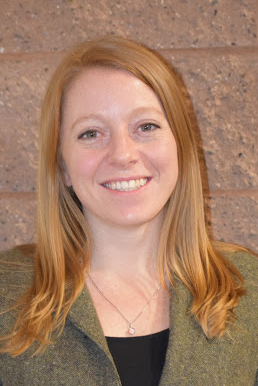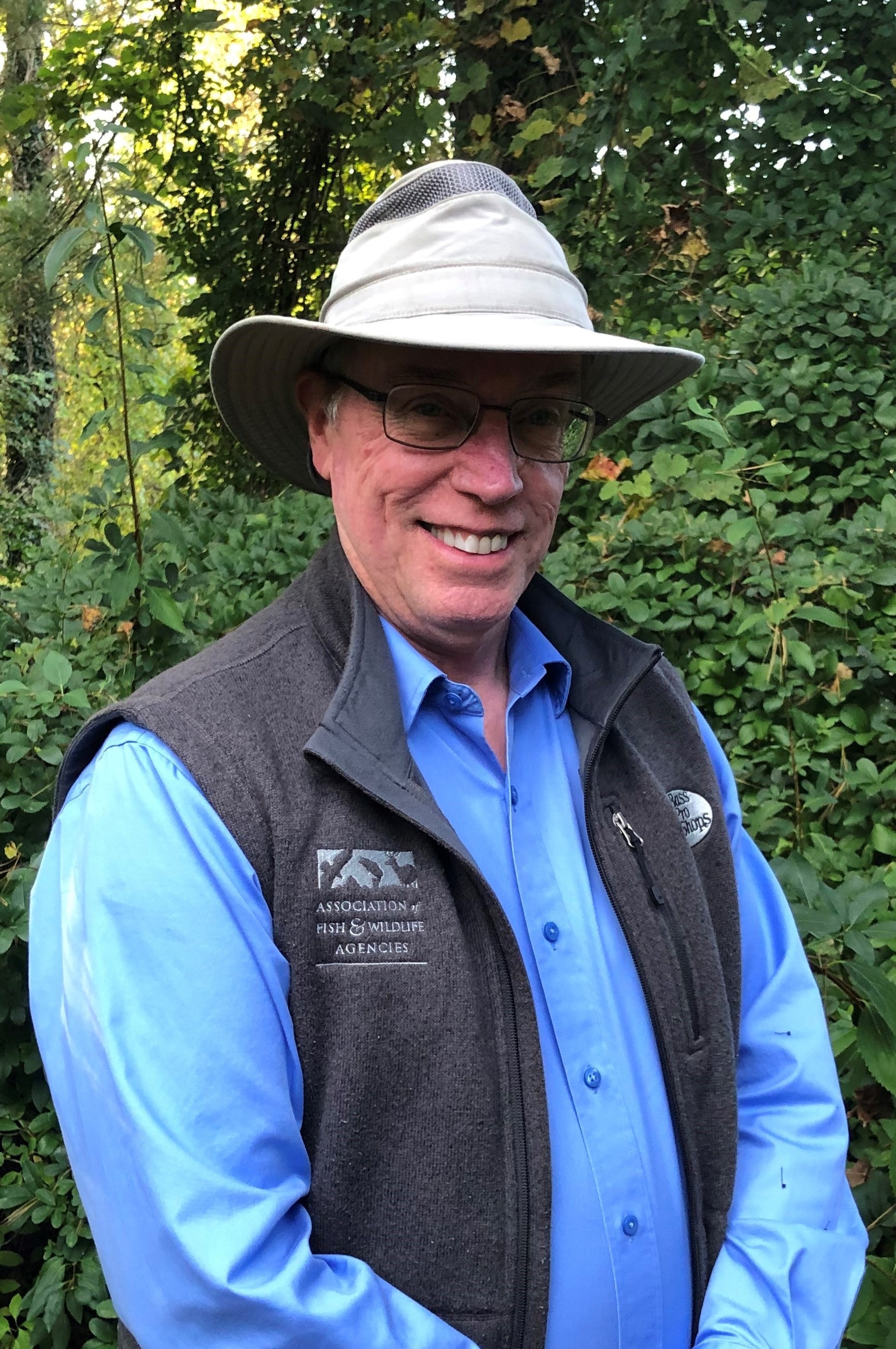MSU scientist protects wildlife populations through disease surveillance, management
Sonja Christensen seeks to curtail wildlife disease in Michigan and beyond.

EAST LANSING, Mich. — As the calendar flips to October each year, thousands of Michigan hunters gear up for another season chasing white-tailed deer. According to the Michigan Department of Natural Resources (MDNR), more than 586,000 hunters purchased a deer license in 2022.
Michigan permits deer hunters to utilize archery, firearms and muzzleloaders during defined periods from October to January. Regardless of hunting style, taking a deer is one aspect of outdoor recreation that delivers a major economic boon to the state.
According to a 2019 study by Michigan United Conservation Clubs, which produced a report authored by faculty in the Michigan State University Eli Broad College of Business, more than $11.2 billion in economic activity is generated each year through hunting- and fishing-related sales across the state, including gear, hotel rooms, food and more.
The report stated that roughly $62 million is made available annually for wildlife and natural resources conservation through hunting and fishing license sales. More than $40 million of that is from hunting licenses.
But these generational pastimes are threatened by a deluge of challenges, with one of the primary sources of angst being animal disease.
Sonja Christensen, an assistant professor in the MSU Department of Fisheries and Wildlife, has dedicated her career to wildlife health and finding solutions to some of its biggest questions. She keenly understands the cultural and economic importance of hunting and how it pairs with conservation — working with wildlife agencies, research colleagues and the public to preserve these treasured natural resources.
“Diseases present complicated challenges that require cooperation among several interest groups to effectively manage,” said Christensen, whose work is supported in part by MSU AgBioResearch. “We need help from state and federal agencies, as well as the public, including landowners, hunters, anglers, environmentalists and anyone else who wants to have a hand in conservation.”
Most of Christensen’s work deals with diseases of cervids such as deer, elk and moose. Her role is built upon the three pillars of MSU’s land-grant mission: research, teaching and outreach.
Christensen teaches undergraduate biology and ecology courses, and a graduate class on natural resources management leadership.
Her research program is aimed at understanding how and why diseases occur, and how that affects wildlife populations. Deer diseases of interest to Christensen include epizootic hemorrhagic disease — a viral illness transmitted by biting midges — and cervid adenoviral hemorrhagic disease, a similar ailment. SARS-CoV-2, the virus that causes COVID-19, has come up as well as deer have been affected. Research is needed to determine if there are spillover effects with humans.
In recent years, however, the spotlight has shone on chronic wasting disease (CWD), a neurodegenerative condition caused by prions — an abnormal form of protein. It is not known to affect humans, but CWD is fatal in all cases involving cervids.
CWD was first discovered in 1967 in Colorado, and according to the Centers for Disease Control and Prevention, it has been found in at least 29 states and two Canadian provinces. CWD has also been detected in a small number of European countries and in imported deer in South Korea.
Transmission is thought to be caused by direct or indirect contact with bodily fluids. Studies show that prions can persist in the environment for years, meaning current exposure risks in a given area may stem from the presence of infected deer from long ago. Symptoms of CWD can take months or years to emerge and may include rapid weight loss, disorientation and fatigue, among others.
The first CWD case in Michigan was discovered in 2008 in a captive whitetail and in 2015 in a free-ranging deer. Since then, the disease has emerged in both the Lower and Upper Peninsulas, but according to the MDNR, no new counties saw positive cases in 2022 sampling.
For a study published in August 2022 in the Journal of Wildlife Management that was funded by the MDNR and the U.S. Fish & Wildlife Service, Christensen and MSU colleagues — including former Ph.D. student Jonathan Cook — sought to create quantitative models that more accurately predict disease spread. The primary goal of the models is to give management agencies the upper hand in making proactive recommendations rather than reacting to disease outbreaks.
One of the complicating factors in managing CWD is the complex nature of white-tailed deer ecology. The persistence of prions in the environment, long-range deer movement, and interactions with humans — such as the transportation of CWD-positive carcasses — can all be unpredictable, but the team’s models attempt to account for these variables.
The team made a series of notable findings, including a correlation between long-distance spread of the disease and the proportion of agriculture, noting that disease risk increases in agricultural areas. Researchers hypothesize that this is a result of higher deer populations in these locations.
The study also demonstrated spatially explicit estimates that can help wildlife managers introduce precise monitoring and interventions across space and time.
“We developed a modeling framework that can incorporate the complex ecology of white-tailed deer that may be valuable across a variety of systems where the disease occurs,” Christensen said. “These models can be used to produce maps of the probability of disease occurrence and detection, which can guide risk assessments, communication and outreach.”
Other studies of Christensen’s have delved into the efficacy of CWD management at the national and international scale.
For a project funded by the MDNR published in the Wildlife Society Bulletin in March 2023, Christensen, MSU colleagues — including former Ph.D. student Noelle Thompson — and researchers from Mississippi State University characterized management agencies’ CWD efforts in the U.S., Canada and Europe. Researchers reported the effects of management at various stages before and after detection.
Twelve of the 24 responding agencies had a weighted surveillance program in place, which puts a greater emphasis on deer with heightened risk factors. Initial responses to CWD detection included bans on movement of live or dead animals and increased bag limits.
The team found that of the roughly 20 U.S. states and six Canadian provinces that haven’t found CWD, only three had active weighted surveillance programs in place. Just four of these states and two provinces had a response plan available online.
“We’ve seen through what’s happened in New York and Minnesota that localized eradication of CWD may be possible if detected early enough,” Christensen said. “Our recommendations are that agencies be proactive in response plan development and to communicate with stakeholders, including the public, on response, disease progression and management outcomes.”
‘Partnerships are essential’
While Christensen’s research is geared toward learning more about effective disease surveillance and management, the outreach aspect of her position takes it to the coordination and policy levels.

Within the CWD Research Consortium, a multistate project initiated at MSU and funded by the U.S. Department of Agriculture, Christensen is a past chair and serves as an executive committee member. The program brings together CWD research from academia, state and federal agencies, nongovernmental organizations, and tribal nations to create collaborative solutions.
In October, she was named to a 12-person committee by the National Academies of Sciences, Engineering, and Medicine to examine CWD. The group will write a report that details the available science and makes recommendations to agencies so evidence-based mitigation strategies can be enacted.
The bulk of her outreach efforts, however, are through a contracted position she began in 2021 as fish and wildlife health coordinator for the Association of Fish & Wildlife Agencies (AFWA), which unites management organizations across North America.
AFWA was founded in 1902 and is composed of several committees, including the Fish & Wildlife Health Committee to which Christensen belongs, that guide its work on the ground. Each committee is chaired by the director of a state, provincial or territorial fish and wildlife agency.
Paul Johansen, chief of the Wildlife Resources Section in the West Virginia Division of Natural Resources, chairs the Fish & Wildlife Health Committee in addition to other roles in AFWA. Throughout his more than 40-year career, he’s seen firsthand the importance of large-scale partnerships in combatting wildlife disease.
“The threats associated with wildlife diseases, including potential zoonotic impacts (transmission to humans), do not respect jurisdictional boundaries,” Johansen said. “To develop and implement effective wildlife health programs, partnerships are essential. There must be close collaboration and coordination among state and federal wildlife agencies, academic institutions, diagnostic facilities, and other entities engaged in wildlife health matters.”
Ron Regan has served as AFWA executive director since 2010 and has spent more than four decades in the fish and wildlife field. He believes the public has an important investment in this process as well.

“In addition to the suite of required professionals, we need public buy-in to successfully manage fish and wildlife,” Regan said. “When I began my career in 1980 in Vermont as a deer biologist, the public meant hunters, anglers, trappers and foresters. Today, about 70% of our state wildlife agency budgets are still from hunters and anglers, but we also know hunting and angling participation has trended downward. Today, 80% of people in the U.S. live in an urban or suburban area. We need engagement and buy-in on conservation from hikers, bird watchers, cyclists, really anyone who utilizes our natural spaces.”
For AFWA, Christensen attempts to do just that. She coordinates the development of best-practice recommendations on disease management with input from a variety of sources. She is the primary point of contact for wildlife veterinarians and serves as a liaison between them and management agencies. Regan said she excels at making everyone involved feel like their voices are heard.
“Dr. Christensen brings everything we could want to this position in terms of her experience and approach,” Regan said. “She has a background in deer biology, and she’s worked with and for management agencies, so she understands how they operate. She, of course, has a deep knowledge of CWD and other diseases. But besides that, she is very good at building relationships and cultivating trust.”
Johansen, who sees her interaction with the committee each meeting, agrees.
“Dr. Christensen is a remarkably talented wildlife professional who adds tremendous value to AFWA in her role,” Johansen said. “She has the technical skills and knowledge required to address complex wildlife disease issues, but perhaps more importantly, she works with the committee in an open and collaborative manner that helps us achieve consensus and move forward.”
Michigan State University AgBioResearch scientists discover dynamic solutions for food systems and the environment. More than 300 MSU faculty conduct leading-edge research on a variety of topics, from health and climate to agriculture and natural resources. Originally formed in 1888 as the Michigan Agricultural Experiment Station, MSU AgBioResearch oversees numerous on-campus research facilities, as well as 15 outlying centers throughout Michigan. To learn more, visit agbioresearch.msu.edu.



 Print
Print Email
Email




